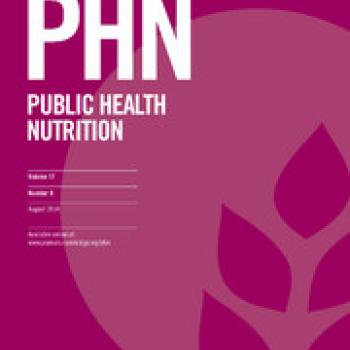Publication Information

This paper examines how diets have changed for 12-year-olds growing up in the same communities in Ethiopia, India, Peru and Vietnam between 2006 and 2013. The paper focuses on dietary diversity – the sum of the entire foods group eaten by the adolescent in the previous 24 hours – and individual food groups.
Individual dietary diversity –an indicator of overall quality of the diet and proxy for nutritional adequacy – improved markedly in Ethiopia and Peru. While no changes in overall dietary diversity were evident in the case of adolescents living in India and Vietnam, the composition of their diets, however, changed. In particular, Indian and Vietnamese 12-year-olds in 2013 were more likely to consume animal-source proteins such as eggs and dairy products to the detriment of consumption of pulses, legumes and seeds, as compared to their peers in 2006. Other notable changes related to a stark increase in the consumption of meat in Peru (+72%) and vegetables and fruits in Ethiopia (+36%) between 2006 and 2013. Consumption of added sugars increased starkly in Ethiopia (+35%) and Vietnam (+44%) in 2013 as compared to 2006.
In the same period, disparities in dietary diversity based on household wealth and place of residence generally decreased, while no strong gender inequalities in diets were evident in either period.
These results highlight rapid changes in the diets of adolescents in a very limited timespan in four different low- and middle-income countries and reflect the hypothesis of a ongoing nutrition transition, i.e. the substitution of traditional diets based on vegetable-source foods for animal-source foods and increased intake of added sugars.
Unhealthy diets are the biggest driver of disease globally. Given the speed in which diets are transforming, global, regional and context-specific policies are urgently needed to avert negative and costly consequences for health-care systems and societal well-being. For children and adolescents in particular, school-based policies and interventions hold promise for promoting healthy diets over the life course.
The online published version of the article is available on the journal website.

This paper examines how diets have changed for 12-year-olds growing up in the same communities in Ethiopia, India, Peru and Vietnam between 2006 and 2013. The paper focuses on dietary diversity – the sum of the entire foods group eaten by the adolescent in the previous 24 hours – and individual food groups.
Individual dietary diversity –an indicator of overall quality of the diet and proxy for nutritional adequacy – improved markedly in Ethiopia and Peru. While no changes in overall dietary diversity were evident in the case of adolescents living in India and Vietnam, the composition of their diets, however, changed. In particular, Indian and Vietnamese 12-year-olds in 2013 were more likely to consume animal-source proteins such as eggs and dairy products to the detriment of consumption of pulses, legumes and seeds, as compared to their peers in 2006. Other notable changes related to a stark increase in the consumption of meat in Peru (+72%) and vegetables and fruits in Ethiopia (+36%) between 2006 and 2013. Consumption of added sugars increased starkly in Ethiopia (+35%) and Vietnam (+44%) in 2013 as compared to 2006.
In the same period, disparities in dietary diversity based on household wealth and place of residence generally decreased, while no strong gender inequalities in diets were evident in either period.
These results highlight rapid changes in the diets of adolescents in a very limited timespan in four different low- and middle-income countries and reflect the hypothesis of a ongoing nutrition transition, i.e. the substitution of traditional diets based on vegetable-source foods for animal-source foods and increased intake of added sugars.
Unhealthy diets are the biggest driver of disease globally. Given the speed in which diets are transforming, global, regional and context-specific policies are urgently needed to avert negative and costly consequences for health-care systems and societal well-being. For children and adolescents in particular, school-based policies and interventions hold promise for promoting healthy diets over the life course.
The online published version of the article is available on the journal website.

